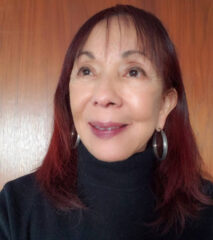 Scholarly Writing to General Nonfiction:
Scholarly Writing to General Nonfiction:
Author Drawn to Power of Community
Interview of Concha Delgado Gaitan, Ph. D. by Nita Sweeney
Nita Sweeney (NS): Before we dive into questions specific to writing, tell our members, with the world beginning to open but many still being cautious, how have you been taking care of yourself?
Concha Delgado Gaitan (CDG): From the beginning of the pandemic, I felt the need to stay as healthy as possible to work with my publisher and complete the last phase of publishing my 10th book. I couldn’t visit friends, museums, theaters, bookstores, or music venues. Protecting my physical as well as my mind and spirit became part of my daily routine.
Following a morning meditation, I did Yoga or QiGong. A healthy breakfast held me till early afternoon. Walking the hills around our house gave me stamina. I wore out two pairs of shoes during that period. Although we missed going out to eat at our favorite restaurants, cooking dinner every evening became a playful and creative discipline that both my husband and I looked forward to enjoying. When restaurants opened for take-out, we supported them frequently.
Additionally, the two most important ways that helped me keep my focus during this past year included daily talking or texting with a family member and friend. And I also played more than ever before with my four cats. They create amusing distractions effortlessly. Their playfulness felt especially healing during part of my 2020 year as I recovered from (non-covid related) pneumonia.
NS: You’ve been a university professor in Anthropology & Education for much of your career. How does that interplay with your writing?
CDG: At Stanford University, I studied Anthropology and Education, emphasizing ethnographic research of culturally diverse communities in the US. My research expertise earned me invitations to research Latino, Hmong, Native Alaskan Athabaskan, Russian Refugee, and Laotian communities as a Professor at the University of California, Davis. Through face-to-face interaction, observations, and interviews, I understood the people’s lives and language and wrote books that represented their stories of empowerment in these underrepresented communities.
In an academic style, I began shaping my underlying premise, highlighting the importance of social justice in our educational system, our public policies, and the resources of the communities that I studied. I wrote over 70 scholarly essays. My first book, Literacy for Empowerment, described a community I researched. The book received great reviews and became very popular within the Anthropology and Education field. It was the first such story written about the importance and uses of literacy in a Latino community.
My need for writing the book was to have a book for one of my research seminars. Although it was an academic book, it read like a story of a community finding its voice, which students and colleagues applauded. It seemed that I had found a voice. Other books followed as among some of the scholarly books I wrote during this period included, Protean Literacy, The Power of Community, and Crossing Cultural Borders. These books became the stories that led me to write stories applicable lessons for practicing educators.
After conducting ethnographic research in numerous communities, I felt it was essential to take the academic stories to a practical level. These different books reached a broader educational audience that works directly with students, families, and communities. Those titles include Involving Latino Parents in the Schools and Building Culturally Responsive Classrooms and Creating a College Culture for Latino Students. I felt that it was especially important to write the book about getting students to college when I learned that only 16% of Latino students who enter a 4-year college complete and graduate.
NS: What led you to the writing life?
CDG: I was a reader from the early years. Reading was something my mother always insisted on—that we have a book in hand. The only writing I did during those years was in English classes.
Teaching has been my mission throughout my life. After teaching elementary school, I became a school principal at the age of 26. I was the first woman principal in an Eastside San Jose school district. I was always interested in books throughout those years, and my writing effort consisted of daily journals and notebooks filled with my thoughts, disappointments, and successes. I wrote short magazine-length critiques and commentaries about children’s literature for culturally diverse students and the shortage of books that depicted these cultures in authentic ways.
My studies at Stanford pushed me into formal writing that professors evaluated. Reading opened many doors for me in my life. I’ve believed that writing about topics that inspired me would also reach those interested in the same issues. I treasure that connection with people—many of whom I know and even more that I meet through my writing.
NS: Tell us about your work in social justice and any role that played in your writing.
CDG: Social justice themes thread through many of my writings. Discrimination has silenced the voices of many communities of color. Through the people’s lives that I observed, I recognize my responsibility to make their stories known.
When I wrote books about a community, I discussed it with them in a language they understood. It was part of my relationship with the communities I studied. They trusted me to write about them because they had a voice in the story about them.
In my books, I tell people’s stories of building community despite the discrimination and economic challenges. Their stories depict the inequalities that people experience in culturally diverse communities. I describe how people find justice by organizing themselves to change their living conditions and empower themselves. They break barriers and participate fully in the educational, social, and political institutions where they reside. Parents work to ensure that their children obtain greater access to resources to improve their lives.
NS: You suffered a health crisis and subsequently wrote a memoir. Would you like to share something about that with us? What helped you with that writing process?
CDG: After years as a senior professor at the University of California Davis, my health took an unexpected downward turn. What I knew as my active life of being a professor and enjoying daily hour-long walks, belly dancing, salsa, and traveling around the country and overseas to lecture to work with my Anthropology and Education colleagues came to a screeching halt for a short time. One night I was awakened by severe full-body pain and high fever, the likes of which I’d never experienced. Initially, emergency rooms diagnosed me with flu-like symptoms and sent me home to rest. I spent weeks with my body weakening more each day. It would take weeks of additional visits to the specialist to diagnose me with Systemic Lupus.
Throughout the ten years that followed I continued my professorship while keeping copious notes that filled books of my health story as it unfolded. After I became stronger, I needed to change my profession and my life in general. In rethinking my career, I committed to putting my health first. I left the University and began my independent subcontract business doing community consulting, research, and writing, which I managed from my home office. Another commitment I made to myself was to end my relationship—not only with the man I was with but also with every other workaholic man that encouraged my workaholic pace.
As my new healthier life took shape, I wrote my memoir Prickly Cactus. The book took a few years to leave my desk because it was the first time writing such a personal account of my life. It was therapeutic since my life was unfolding as I wrote about the transformation that were occurring. Writing a memoir pushed me to write quite differently than my past professional books. One way I thought I could break some of my pattern of writing was to take fiction writing classes to stretch me out of my familiar writing format. In the process, I became good friends with my writing teacher. Since then, she has been a great coach; she influenced my style as I competed Prickly Cactus. Writing my memoir taught me how to write to a general audience about a personal matter–my health.
By the time I completed Prickly Cactus, I had decided to try marriage for the second time. I married my dear partner, Dudley whom I met before I began writing Prickly Cactus.
NS: You are a prolific writer. Can you share some tips with the WNBA-SF members as to how you produce such a large number and variety of works?
CDG: My enthusiasm for writing satisfies my appetite for learning about the topics that I write. I also learn new techniques. My love for the people and their stories of resilience has been my joy and driving force in writing.
Where my work routine is concerned, I’m very disciplined. However, in recent years, I find myself writing in spurts according to my inspiration rather than in defined blocks of time. It’s been productive and more satisfying at this point. I suppose it’s a form of discipline.
NS: Are you ever surprised in the writing process? If so, how and when?
CDG: My surprises became major lessons. I’ll mention a couple of them. Moving from academic to professional books for practicing educators required me to write in a language that was accessible to educators without using the academic jargon commonly found in scholarly books.
Another new twist occurred when I wrote, Prickly Cactus called for still a different style of language used to tell a story. I wanted to describe my experience so that my younger family members would be able to read without oversimplifying the story. I fought the impulse to cite every date and new concept. And writing about my life included family members. I wanted to make sure that they felt comfortable with their names in the book. I maintained my writer’s integrity and ensured that I would not slight my story while remaining on speaking terms with family members.
NS: Is there something you wish you had been told or not told, earlier about writing?
CDG: Well into my doctoral studies, a professor at Stanford told me that I shouldn’t continue my doctoral studies because I didn’t know how to write and that I would never learn how to write academically well enough to earn a degree. Her comments rattled me because I took it personally; I lost time and self-confidence, which took time to heal. I could have used that time more productively to work on my studies. After talking with a few professors whose teaching, I respected, I felt ready to continue my Stanford studies.
One-and-a-half years later, I graduated with a Ph.D., and I had published two scholarly articles. I am grateful that I did not devalue my work or stop writing because it was only the beginning of my rich and meaningful storytelling career in four different writing categories: academic for researchers, a memoir on health and healing, educational books for practicing educators, and aging for a general audience.
NS: In a conversation we had before this interview, we discussed aging. How has that impacted your writing?
CDG: Generally, I feel that age does not define who I am or what I do. I don’t typically relate to people according to age. I feel comfortable in intergenerational groups. This might be because we have a large family representing three age levels. We’re a close family and relate to each other comfortably across age groups. However, more recent years, I have become more aware of being a senior baby boomer as my closest friends and colleagues talk about being at this stage of our lives. The prominent issues on people’s minds include discussions on health, work, traveling, caring for parents, and losing spouses. Our conversations piqued my interest enough to research and write my recent book, Wings of a Firebird—The Power of Relationships in our Later Years. I feel strongly that aging in this society needs to be discussed and written from as many perspectives as can lead us to more humanistic policies for this age group.
NS: What is next for you, writing-wise?
CDG: My book Wings of a Firebird gives us a window into the diversity of experiences of aging in our country and the need for policies and resources to support the largest growing demographic. The storytellers in my book spoke of their meaningful relationships. However, there was one type of relationship that did not appear in this book, which I feel merits attention as it plays out in the lives of older adults. The Pandemic exposed more areas for us to explore about seniors in our society. I’m vague about the specifics of my next topic because I read a great deal and interview many people to shape and clarify my topic. I’ve begun doing that type of research to see what story unfolds. Stay tuned.
Concha Delgado Gaitan has written extensively in the field of Anthropology and Education. Her works emphasize social justice issues of unrepresented communities. The National American Anthropological Association/Council of Anthropology named the presidential Fellowship in her honor. She also received the Anthropology and Education Award from that organization for her lifetime contribution to the field. In her capacity as a professor and researcher, she has worked with communities including Latino, Russian Refugees, Alaskans Native students, Hmong, and transnational populations in Mexico and Spain, where she has also lectured on her books.
Delgado Gaitan’s wealth of experience as an elementary teacher, school principal, and university professor enriches her family-community-school research.
Her book Involving Latino Families in the Schools was a best seller in Corwin Press, and Prickly Cactus was a best seller in the category of “Women’s Health” when it was released by Cypress House Press on Amazon.
Other titles of Delgado Gaitan’s books include Literacy for Empowerment; Crossing Cultural Borders; The Power of Community; Protean Literacy; Crossing Cultural Borders; and School and Society; Building A College Culture for Latino Students.
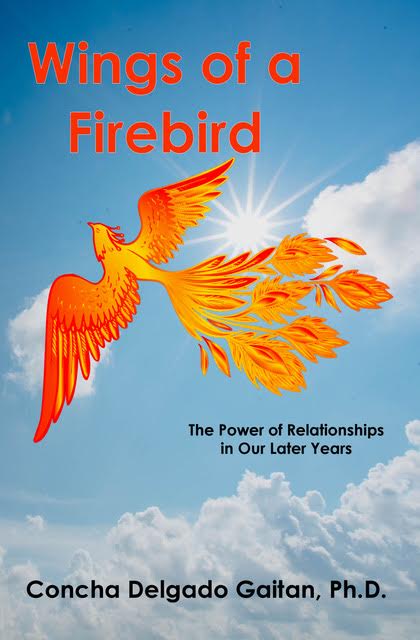
Her recent book is Wings of a Firebird; the Power of Relationships in our Later Years. It marks the beginning of a new direction in her writing, a focus on issues of older adults in our society.
For more information, visit her website.
Interview by Nita Sweeney, author of the running and mental health memoir, Depression Hates a Moving Target: How Running with My Dog Brought Me Back from the Brink and co-creator of You Should Be Writing: A Journal of Inspiration & Instruction to Keep Your Pen Moving

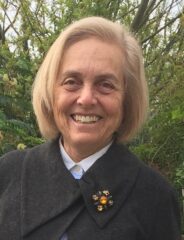



 LBM: Yes—in particular, why I find it problematic. It may seem like a strange subject, but to me, the issue remains a fascinating convergence of history, ethics, medicine, and sexuality. I wrote my first novel,
LBM: Yes—in particular, why I find it problematic. It may seem like a strange subject, but to me, the issue remains a fascinating convergence of history, ethics, medicine, and sexuality. I wrote my first novel,  LBM: Lots! The manuscript sat in a drawer, off and on, for over twenty years. I kept taking stabs at it, but somehow, I couldn’t get it right. I would pull it out, instantly see what was wrong with it, fix it, send it out to beta readers, spend weeks or months incorporating their feedback, send it out to agents, get rejected, and put it back in the drawer. This happened so many times that I wrote all my other books in between! So even though
LBM: Lots! The manuscript sat in a drawer, off and on, for over twenty years. I kept taking stabs at it, but somehow, I couldn’t get it right. I would pull it out, instantly see what was wrong with it, fix it, send it out to beta readers, spend weeks or months incorporating their feedback, send it out to agents, get rejected, and put it back in the drawer. This happened so many times that I wrote all my other books in between! So even though 

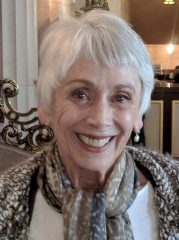 Kate Farrell is our host and facilitator. Kate is a storyteller, author, librarian, founded the Word Weaving Storytelling Project and published numerous educational materials on storytelling. Farrell’s new book, a timely how-to guide on the art of storytelling for adults, Story Power: Secrets to Creating, Crafting, and Telling Memorable Stories, was released in June 2020.
Kate Farrell is our host and facilitator. Kate is a storyteller, author, librarian, founded the Word Weaving Storytelling Project and published numerous educational materials on storytelling. Farrell’s new book, a timely how-to guide on the art of storytelling for adults, Story Power: Secrets to Creating, Crafting, and Telling Memorable Stories, was released in June 2020. 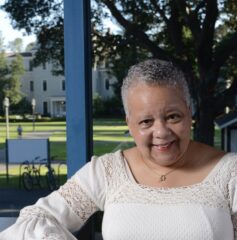 Sheryl J. Bize-Boutte is a Pushcart Prize nominated author. Her second book, All That and More’s Wedding, is a collection of fictional mystery/crime short stories. Running for the 2:10, a follow-on to A Dollar Five delved deeper into her coming of age in Oakland and the embedded issues of race and skin color. Betrayal on the Bayou, published June 2020, is her first novel. Website:
Sheryl J. Bize-Boutte is a Pushcart Prize nominated author. Her second book, All That and More’s Wedding, is a collection of fictional mystery/crime short stories. Running for the 2:10, a follow-on to A Dollar Five delved deeper into her coming of age in Oakland and the embedded issues of race and skin color. Betrayal on the Bayou, published June 2020, is her first novel. Website: 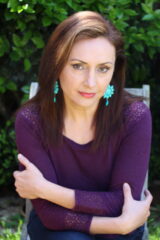 Humaira Ghilzai is a writer, speaker and Afghanistan Cultural Consultant. Humaira opens the world to Afghan culture and cuisine through her wildly popular blog,
Humaira Ghilzai is a writer, speaker and Afghanistan Cultural Consultant. Humaira opens the world to Afghan culture and cuisine through her wildly popular blog,  Mary Mackey is an award-winning novelist and poet with fourteen novels and eight collections of poetry. Mary became a writer by running high fevers, tramping through tropical jungles, dodging machine gun fire, being swarmed by army ants, making catastrophic decisions about men, and reading. Website:
Mary Mackey is an award-winning novelist and poet with fourteen novels and eight collections of poetry. Mary became a writer by running high fevers, tramping through tropical jungles, dodging machine gun fire, being swarmed by army ants, making catastrophic decisions about men, and reading. Website: 


 As a consultant and professor of strategic management,
As a consultant and professor of strategic management, 


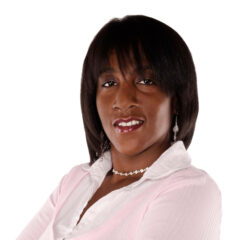 Sharifah Hardie is a business consultant, talk show host and influencer. Sharifah was a Long Beach City Council Candidate in the 2020 March 3rd Primary Election and is a Diversity, Equity and Inclusion Expert. With over twenty five years of business experience, Sharifah Hardie has positioned herself to become one of the top executives in entertainment, business, politics and a person on the rise. Sharifah is the author of Signs You Might Be An Entrepreneur – How to Discover the Entrepreneur in You
Sharifah Hardie is a business consultant, talk show host and influencer. Sharifah was a Long Beach City Council Candidate in the 2020 March 3rd Primary Election and is a Diversity, Equity and Inclusion Expert. With over twenty five years of business experience, Sharifah Hardie has positioned herself to become one of the top executives in entertainment, business, politics and a person on the rise. Sharifah is the author of Signs You Might Be An Entrepreneur – How to Discover the Entrepreneur in You Lyzette Wanzer’s work appears in over twenty-five literary journals. She is a contributor to The Chalk Circle: Intercultural Prizewinning Essays (Wyatt-MacKenzie), The Naked Truth, Essay Daily, and San Francisco University High School Journal. A three-time San Francisco Arts Commission and Center for Cultural Innovation grant recipient, Lyzette serves as Judge for the Soul-making Keats Literary Competition Intercultural Essay category. She is currently helming an anthology entitled Trauma, Tresses, & Truth: Untangling Our Hair Through Personal Narrative.
Lyzette Wanzer’s work appears in over twenty-five literary journals. She is a contributor to The Chalk Circle: Intercultural Prizewinning Essays (Wyatt-MacKenzie), The Naked Truth, Essay Daily, and San Francisco University High School Journal. A three-time San Francisco Arts Commission and Center for Cultural Innovation grant recipient, Lyzette serves as Judge for the Soul-making Keats Literary Competition Intercultural Essay category. She is currently helming an anthology entitled Trauma, Tresses, & Truth: Untangling Our Hair Through Personal Narrative. Sumbul Ali-Karamali, a former corporate attorney with an additional degree in Islamic law, is an award-winning writer and speaker. She grew up in California, answering questions about her religion, which is why her books engagingly introduce readers to Muslim beliefs and practices and include The Muslim Next Door: The Qur’an, the Media, and that Veil Thing and her just-released Demystifying Shariah: What It Is, How It Works, and Why It’s Not Taking Over Our Country.
Sumbul Ali-Karamali, a former corporate attorney with an additional degree in Islamic law, is an award-winning writer and speaker. She grew up in California, answering questions about her religion, which is why her books engagingly introduce readers to Muslim beliefs and practices and include The Muslim Next Door: The Qur’an, the Media, and that Veil Thing and her just-released Demystifying Shariah: What It Is, How It Works, and Why It’s Not Taking Over Our Country.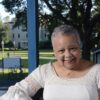 Pushcart Prize nominee Sheryl J. Bize-Boutte is an Oakland multidisciplinary writer. Her autobiographical and fictional short story collections, along with her lyrical and stunning poetry have been described as “rich in vivid imagery,” “incredible,” and “great contributions to literature.” Her first novel, Betrayal on the Bayou, was published in June 2020. She is also a popular literary reader, presenter, storyteller, curator and emcee for local events.
Pushcart Prize nominee Sheryl J. Bize-Boutte is an Oakland multidisciplinary writer. Her autobiographical and fictional short story collections, along with her lyrical and stunning poetry have been described as “rich in vivid imagery,” “incredible,” and “great contributions to literature.” Her first novel, Betrayal on the Bayou, was published in June 2020. She is also a popular literary reader, presenter, storyteller, curator and emcee for local events. Fourth-generation native San Franciscan, Kathleen Archambeau, is an award-winning writer and LGBTQ activist. She is author of four nonfiction works, Climbing the Corporate Ladder in High Heels (2006), “Seized,” an essay in The Other Woman (2007), edited by Victoria Zackheim, Pride & Joy (2017), and We Make It Better (2019), with gay dad, Eric Rosswood. Academy Award-winning screenwriter, Dustin Lance Black wrote the Foreword to Pride & Joy and endorsed We Make It Better. Archambeau’s work has been favorably reviewed in global and national literary publications and she has been a featured speaker at national and global Pride literary events. Her book was included as part of the Oakland Museum of California store’s Queer California Exhibit and she is a founding member of the James Hormel LGBT wing of the SF Public Library.
Fourth-generation native San Franciscan, Kathleen Archambeau, is an award-winning writer and LGBTQ activist. She is author of four nonfiction works, Climbing the Corporate Ladder in High Heels (2006), “Seized,” an essay in The Other Woman (2007), edited by Victoria Zackheim, Pride & Joy (2017), and We Make It Better (2019), with gay dad, Eric Rosswood. Academy Award-winning screenwriter, Dustin Lance Black wrote the Foreword to Pride & Joy and endorsed We Make It Better. Archambeau’s work has been favorably reviewed in global and national literary publications and she has been a featured speaker at national and global Pride literary events. Her book was included as part of the Oakland Museum of California store’s Queer California Exhibit and she is a founding member of the James Hormel LGBT wing of the SF Public Library. Michael Larsen co-founded Larsen-Pomada Literary Agents in 1972. Over four decades, the agency sold hundreds of books to more than 100 publishers and imprints. The agency has stopped accepting new writers, but Mike loves helping all writers. He gives talks about writing and publishing, and does author coaching. He wrote How to Write a Book Proposal and How to Get a Literary Agent, and co-authored Guerrilla Marketing for Writers. Mike is co-director of the San Francisco Writers Conference and the San Francisco Writing for Change Conference.
Michael Larsen co-founded Larsen-Pomada Literary Agents in 1972. Over four decades, the agency sold hundreds of books to more than 100 publishers and imprints. The agency has stopped accepting new writers, but Mike loves helping all writers. He gives talks about writing and publishing, and does author coaching. He wrote How to Write a Book Proposal and How to Get a Literary Agent, and co-authored Guerrilla Marketing for Writers. Mike is co-director of the San Francisco Writers Conference and the San Francisco Writing for Change Conference.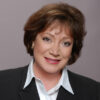 Rose Castillo Guilbault is the author of the highly acclaimed memoir Farmworker’s Daughter: Growing Up Mexican In America. Her essays have been published in dozens of textbooks and anthologies. She also wrote the book The Latina’s Guide to Success In the Workplace. Rose was the first Hispanic columnist for the San Francisco Chronicle; her column “Hispanic USA” was honored by a number of journalistic and community organizations. A longtime television journalist, she was awarded an EMMY for her work. Ms. Castillo Guilbault was featured in the award-winning book Latinas and Their Muses. Her community activities include Chair of the Commonwealth Club of California’s board of directors and serving as a judge on the Book Awards Committee for several years.
Rose Castillo Guilbault is the author of the highly acclaimed memoir Farmworker’s Daughter: Growing Up Mexican In America. Her essays have been published in dozens of textbooks and anthologies. She also wrote the book The Latina’s Guide to Success In the Workplace. Rose was the first Hispanic columnist for the San Francisco Chronicle; her column “Hispanic USA” was honored by a number of journalistic and community organizations. A longtime television journalist, she was awarded an EMMY for her work. Ms. Castillo Guilbault was featured in the award-winning book Latinas and Their Muses. Her community activities include Chair of the Commonwealth Club of California’s board of directors and serving as a judge on the Book Awards Committee for several years.
 Editor “Grows” Food and Authors
Editor “Grows” Food and Authors Self-Proclaimed “Political Junkie” Reveals Her Writing Secrets
Self-Proclaimed “Political Junkie” Reveals Her Writing Secrets GS: Thanks. My interest in writing started with an awareness of news and politics. My grandmother was a Holocaust survivor in that she realized early on things were going downhill for the Jews in Poland. She left before it got really bad and tried to convince her siblings to come with her to the states. They thought she was over reacting and hence were killed by the Nazis. She taught me early on to pay attention to the government because things can get very bad and you need to be alert. My mother was a political junkie and she taught me the same lessons.
GS: Thanks. My interest in writing started with an awareness of news and politics. My grandmother was a Holocaust survivor in that she realized early on things were going downhill for the Jews in Poland. She left before it got really bad and tried to convince her siblings to come with her to the states. They thought she was over reacting and hence were killed by the Nazis. She taught me early on to pay attention to the government because things can get very bad and you need to be alert. My mother was a political junkie and she taught me the same lessons.  By Debra Eckerling, author of
By Debra Eckerling, author of  I learned about “To Write” lists from best-selling author Natalie Goldberg, of Writing Down the Bones fame. As I sat in the classroom at Mabel Dodge Luhan House in Taos, New Mexico, I watched her pick up her writing journal, flip to the back, and show us a list of scrawled topics she’d penned on the final page. She carried a notebook everywhere and jotted ideas on the back page as they occurred to her. “If I’m stuck, I look at these,” she said.
I learned about “To Write” lists from best-selling author Natalie Goldberg, of Writing Down the Bones fame. As I sat in the classroom at Mabel Dodge Luhan House in Taos, New Mexico, I watched her pick up her writing journal, flip to the back, and show us a list of scrawled topics she’d penned on the final page. She carried a notebook everywhere and jotted ideas on the back page as they occurred to her. “If I’m stuck, I look at these,” she said. WNBA-the National Organization
WNBA-the National Organization 
 MK:
MK:
 NS: You have taught writing for decades. How did you begin teaching and can you share some outstanding moments from that part of your life?
NS: You have taught writing for decades. How did you begin teaching and can you share some outstanding moments from that part of your life? Barbara Rose Brooker, MA, is an age activist, teacher, painter, poet, and author. She has published 13 books, won a National Library Award for her poetry, and has appeared often on “The Today Show,” “The Talk,” “ET” and Andy Cohen’s, “Watch What Happens Live.” Also a columnist, she has published “Boomer in the City” for the
Barbara Rose Brooker, MA, is an age activist, teacher, painter, poet, and author. She has published 13 books, won a National Library Award for her poetry, and has appeared often on “The Today Show,” “The Talk,” “ET” and Andy Cohen’s, “Watch What Happens Live.” Also a columnist, she has published “Boomer in the City” for the  Annemarie O’Brien (AO):
Annemarie O’Brien (AO): AO:
AO:
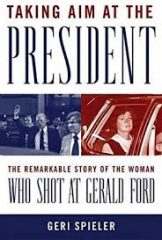 NS: Taking Aim at the President has been optioned for a major motion picture. How did that come about and what has that process meant for you?
NS: Taking Aim at the President has been optioned for a major motion picture. How did that come about and what has that process meant for you?
 SJBB
SJBB SJBB
SJBB SJBB
SJBB